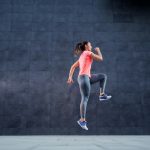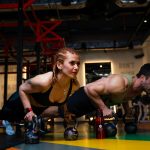Functional Fitness: DIY Workouts to Improve Daily Activities
Functional fitness focuses on exercises that improve the ability to perform everyday activities efficiently and safely. By incorporating these workouts into a routine, individuals can enhance their strength, balance, and coordination, which are essential for tasks like lifting groceries, climbing stairs, or even playing with children. Engaging in functional fitness can significantly improve one’s quality of life by making daily activities easier and more enjoyable.
These exercises often mimic real-life movements, effectively preparing the body for common physical challenges. They do this by using multiple muscle groups simultaneously, promoting functional strength. This type of training not only aids in injury prevention but also boosts overall fitness, making it an ideal approach for those seeking practical improvements in their daily routines.
Anyone can create their own functional fitness routine using simple body-weight exercises or minimal equipment. By focusing on movements that reflect real-life tasks, these DIY workouts offer an accessible way to enhance overall fitness and functionality. Whether a seasoned athlete or new to fitness, functional training provides benefits that extend beyond the gym, enriching everyday life.
Understanding Functional Fitness

Functional fitness focuses on exercises that simulate real-life movements, enhancing one’s ability to perform daily activities efficiently. This approach to training emphasizes the body’s natural mobility and stability, ensuring that the exercises have a direct application to everyday tasks.
Definition and Core Principles
Functional fitness refers to a type of exercise that equips the body for daily life activities. The core principles include multi-joint and multi-muscle exercises that mimic tasks like lifting, squatting, pulling, and reaching. These exercises engage multiple muscle groups in harmonious coordination, promoting balance and flexibility.
It emphasizes adaptable exercises rather than isolated movements, aiming for a balanced fitness approach. Each workout is designed to improve strength and endurance, enhancing the ease of daily activity. Unlike traditional bodybuilding, functional training prioritizes the quality of movement rather than aesthetics.
Importance in Daily Life
Incorporating functional fitness into daily routines offers profound benefits for overall well-being. The primary intent is to optimize movement efficiency in daily tasks, reducing strain and preventing injuries. These workouts help in executing ordinary activities like getting up from a chair, carrying groceries, or playing with children more effectively.
This training can lead to better posture, improved core stability, and increased muscle strength. As people age, maintaining the body’s agility becomes crucial, and functional fitness helps in preserving joint health and mobility. By training the body to react appropriately to real-world scenarios, individuals can maintain independence and confidence throughout their lives.
Foundations of Functional Strength
Functional strength is crucial for enhancing daily activities. It focuses on creating resilience through core stability and engaging major muscle groups. This foundation supports effective movement patterns applicable to everyday tasks.
Core Strength and Stability
Core strength forms the backbone of functional fitness. It encompasses the muscles in the abdomen, lower back, hips, and pelvis. These muscles work in harmony to stabilize the body during movement. When engaging in functional activities, core stability helps to maintain balance and control. Whether lifting groceries or climbing stairs, a strong core minimizes the risk of injury.
Effective exercises include planks, bridges, and rotational movements. Planks engage multiple muscle groups, building endurance and stability. Bridges strengthen the glutes and lower back, essential for proper posture and movement efficiency. Rotational exercises enhance flexibility and coordination, contributing to overall stability.
Major Muscle Groups Involved
Functional strength relies heavily on several major muscle groups. The legs, particularly the quadriceps, hamstrings, and calves, generate power for actions like squatting and stepping. The back and shoulders support lifting and carrying tasks. Engaging these muscles through compound exercises is essential.
Squats, lunges, and deadlifts are excellent for targeting leg muscles. They mimic natural movements, promoting functional strength. Rows and presses activate the back and shoulder muscles, preparing the body for real-world lifting tasks. Regularly incorporating these exercises can help develop robust, balanced musculature that improves functional capability in everyday activities. Proper technique is important to maximize benefits and prevent injury.



